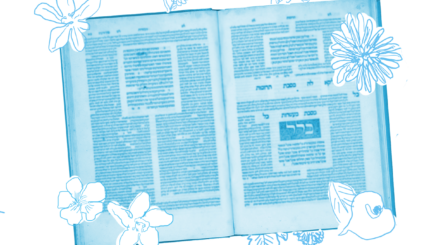We recently learned that when idolaters worship something natural, like a mountain or tree, that does not automatically render the object forbidden to Jews. But now the Gemara has a follow-up concern: Can that same natural object worshipped by idolaters be used by Jews for a sacred purpose? For example:
Reish Lakish raises a dilemma: In the case of one who bows to a palm tree, what is the halakhah with regard to its lulav? Is it permitted for the mitzvah or not?
A palm tree worshipped by idolaters does not automatically become forbidden. But can it contribute fronds for a lulav to be waved in a sukkah? The Gemara clarifies that we must be talking about a tree that was not originally planted for worship, because such a tree would be forbidden even for ordinary use. However, a tree that was only later an object of idol worship occupies a grayer zone. While Rabbi Yosei believes that tree has the same status as a tree planted for idolatrous purposes, and is completely forbidden, the rabbis don’t agree. But would they go so far as use that tree for a lulav? Or would they say that its association with idolatry renders it (and its products) repulsive to God, and therefore a lulav is best acquired from a palm that has never been worshipped.
Rav Dimi goes on to present a different understanding of Reish Lakish’s question:
He said: Reish Lakish raises the dilemma with regard to an ashera whose status as an object of idol worship was revoked. Is there disqualification with regard to mitzvot or is there no disqualification with regard to mitzvot?
When the tree was an ashera, says Rav Dimi, its branches were forbidden for any use, including for mitzvot. But now that it’s no longer an ashera, it is permitted for secular usage, though we are unsure whether it can be used for a sacred purpose.
While the Gemara doesn’t arrive at a satisfactory answer, these questions hinge on the distinctions we make between everyday usage and benefit and that which we deem worthy of use in holy contexts. This conversation is an interesting parallel to the concept that comes up primarily in Tractate Sukkot, of mitzvah ha’bah b’aveirah — a mitzvah achieved by means of transgression — and the question of whether such a mitzvah is effective. These discussions illustrate that the division between the categories of sacred and profane is not binary, requiring the rabbis to constantly probe the boundary.
Read all of Avodah Zarah 47 on Sefaria.
This piece originally appeared in a My Jewish Learning Daf Yomi email newsletter sent on August 4, 2025. If you are interested in receiving the newsletter, sign up here.
With your help, My Jewish Learning can provide endless opportunities for learning, connection and discovery.



